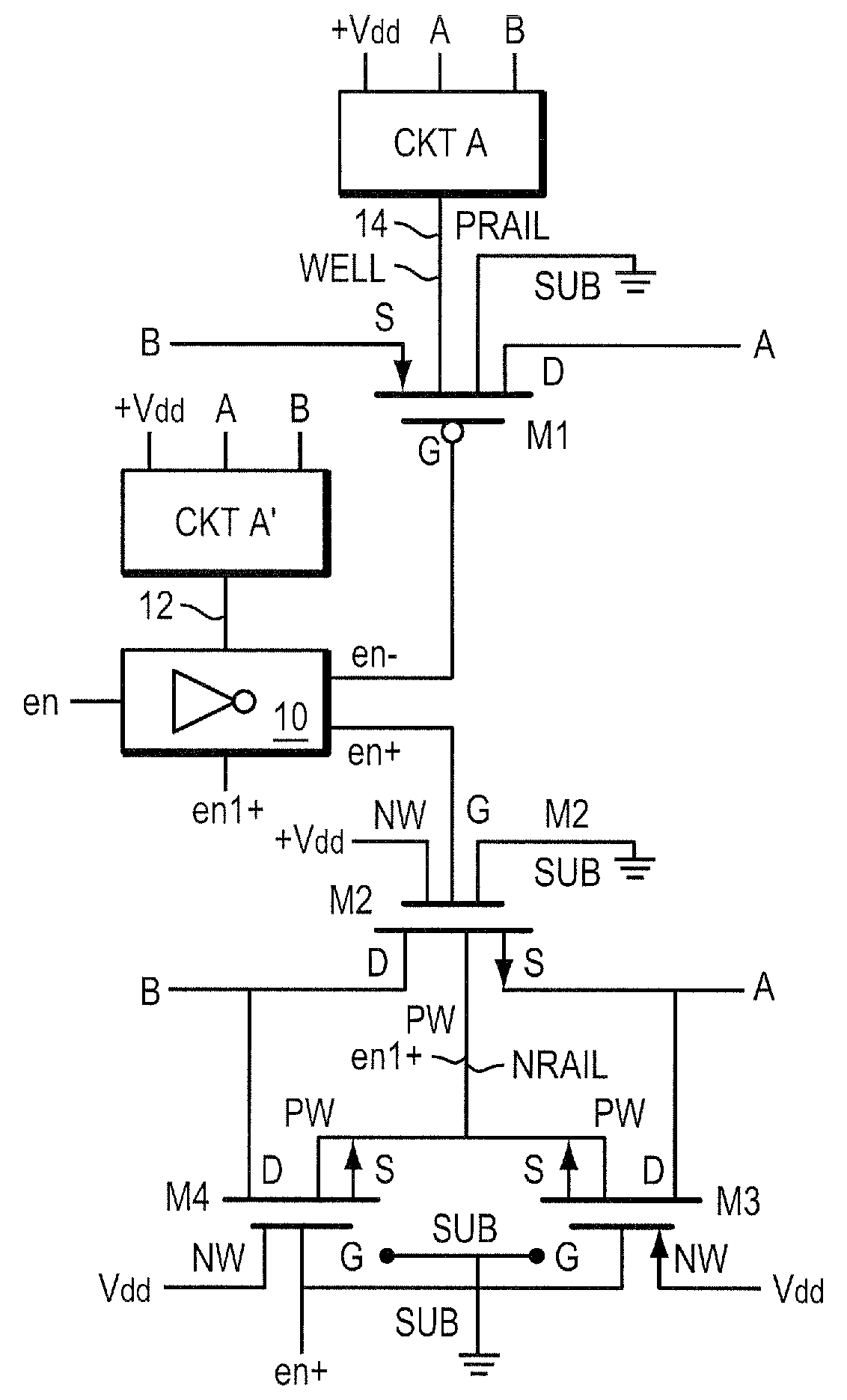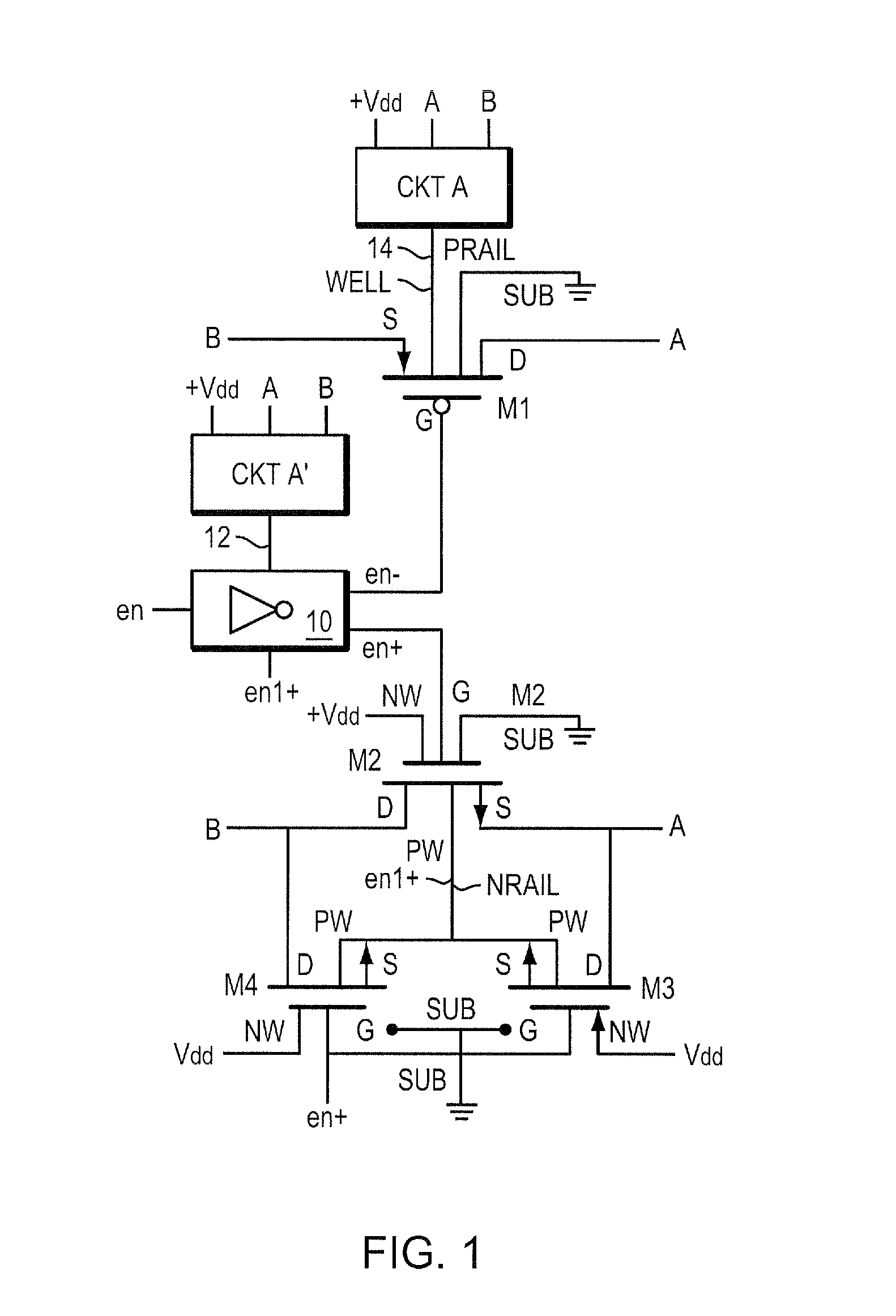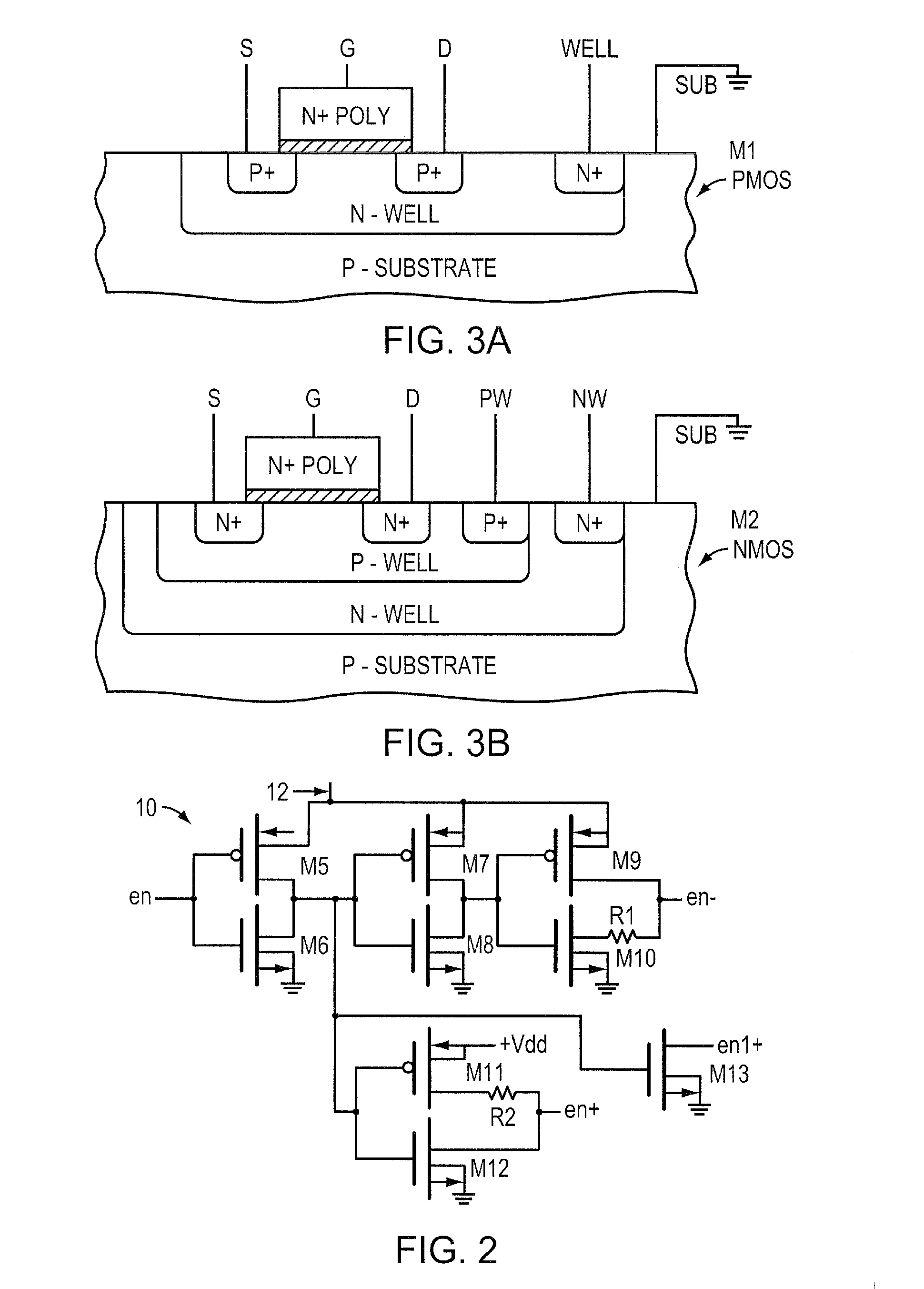Over-voltage tolerant pass-gate
a technology of mosfet transistor and pass-gate, which is applied in the direction of pulse generator, pulse technique, instruments, etc., can solve the problems of trouble, low power supply level, and threshold requirements inherent in mosfet transistors, so as to reduce leakage, reduce gate leakage, and reduce the effect of large well leakag
- Summary
- Abstract
- Description
- Claims
- Application Information
AI Technical Summary
Benefits of technology
Problems solved by technology
Method used
Image
Examples
Embodiment Construction
[0030]FIG. 1 has a PMOS, M1, and an NMOS, M2, in parallel, joining point A to point B. These two MOS transistors are the primary parallel transistor switches that comprise a pass-gate. The substrate contacts, SUB, of each of the transistor switches are functionally connected to ground. The WELL of PMOS M1 is tied to CKT A, its gate G to an enable signal, en−, its drain to external contact A and its source to external contact B. In normal operation the pass-gate transfers signals from A to B or vice versa.
[0031]The drain of the parallel NMOS, M2, is functionally connected to external contact B, and its source to external contact A. As known to those skilled in the art, the drain and source of these transistors often may be reversed with no effect. The gate G of M2 is connected to a positive true enable signal, en+, and to the gates of M2 and M3, as discussed below. The PW (P Well) is connected to a positive true enable signal, en1+, and the NW (N-Well) of the M2 is connected to +Vdd....
PUM
 Login to View More
Login to View More Abstract
Description
Claims
Application Information
 Login to View More
Login to View More - R&D
- Intellectual Property
- Life Sciences
- Materials
- Tech Scout
- Unparalleled Data Quality
- Higher Quality Content
- 60% Fewer Hallucinations
Browse by: Latest US Patents, China's latest patents, Technical Efficacy Thesaurus, Application Domain, Technology Topic, Popular Technical Reports.
© 2025 PatSnap. All rights reserved.Legal|Privacy policy|Modern Slavery Act Transparency Statement|Sitemap|About US| Contact US: help@patsnap.com



